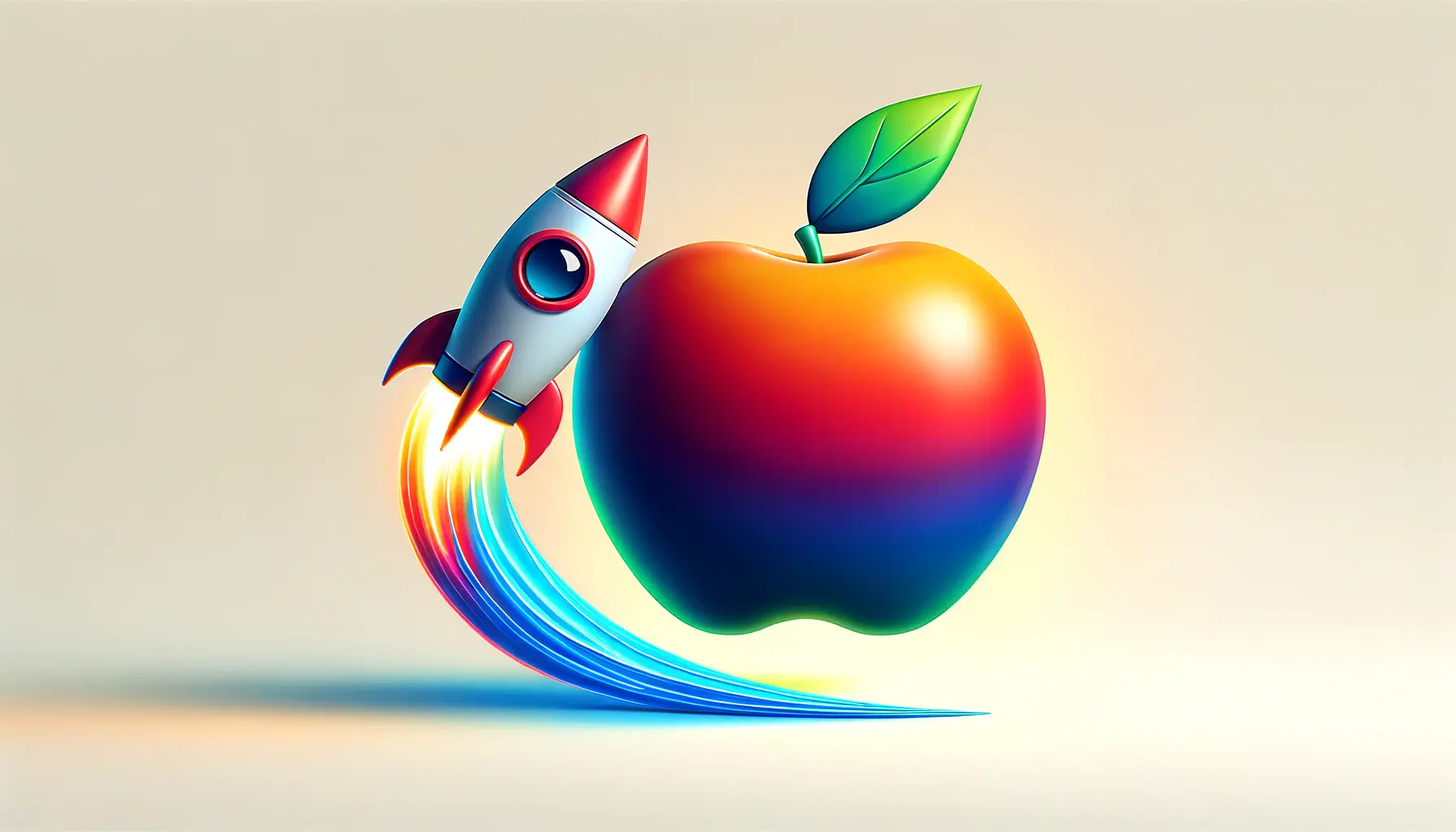As we step into 2024, the digital advertising landscape continues to evolve at a rapid pace, with ad variations playing a pivotal role in the success of online marketing campaigns.
Ad variations, particularly within the realm of Apple Search Ads, have become an indispensable tool for marketers aiming to capture the attention of their target audience in a highly saturated digital environment.
The essence of creating effective ad variations lies in the ability to test and optimize various elements of an ad to determine what resonates best with the audience, thereby improving engagement rates and driving higher conversion.
The concept of ad variations is not merely about altering visuals or text but involves a comprehensive strategy that includes understanding audience behavior, leveraging advanced technologies, and applying creative thinking.
As we navigate through the nuances of ad variations, it becomes clear that success in this domain requires a blend of analytical prowess and creative flair.
This article aims to delve into the best practices for ad variations in 2024, offering valuable insights and actionable strategies to help marketers excel in their advertising efforts.
- Understanding the Importance of Ad Variations
- Strategies for Crafting Compelling Ad Variations
- Optimizing Ad Variations for Different Platforms
- Integrating Creativity with Data Analytics
- Maximizing Engagement Through Ad Personalization
- Challenges and Solutions in Ad Variation Implementation
- Future Trends in Ad Variations
- Embracing the Future of Ad Variations
- FAQs on Best Practices for Ad Variations in 2024
Understanding the Importance of Ad Variations
Ad variations serve as a critical component in the toolkit of digital marketers, enabling them to fine-tune their advertising campaigns for optimal performance.
The significance of ad variations stems from their ability to provide insights into audience preferences, which can be instrumental in crafting more effective and engaging ads.
By systematically testing different versions of an ad, marketers can uncover valuable data on what elements—be it the headline, description, imagery, or call-to-action—drive the most engagement and conversions.
This iterative process of testing and optimization is not just about improving a single campaign but also contributes to a deeper understanding of the target audience.
Such insights are invaluable for informing future advertising strategies, ensuring that each campaign is more refined and targeted than the last.
Moreover, ad variations are essential for staying competitive in the dynamic digital advertising landscape, where consumer preferences and platform algorithms are constantly evolving.
Key Components of Effective Ad Variations
Creating successful ad variations involves several key components, each playing a vital role in the overall effectiveness of the campaign.
Firstly, a clear understanding of the target audience is paramount.
Knowing who you are trying to reach, their interests, pain points, and online behavior, lays the foundation for creating variations that resonate.
Secondly, a strong creative strategy that encompasses compelling visuals, engaging copy, and a clear call-to-action is crucial.
These elements should be aligned with the brand’s messaging and values to ensure consistency across all ad variations.
Additionally, leveraging technology and data analytics is essential for testing and measuring the performance of different ad variations.
Advanced tools and platforms offer insights into metrics such as click-through rates, conversion rates, and engagement levels, allowing marketers to make data-driven decisions.
Finally, a culture of continuous testing and learning is vital.
The digital advertising space is ever-changing, and what works today may not work tomorrow.
Therefore, marketers must be agile, willing to experiment, and learn from each campaign to refine their ad variations strategy continually.
The success of ad variations hinges on a deep understanding of the target audience, a robust creative strategy, the effective use of technology for testing and analytics, and a commitment to continuous improvement.
Strategies for Crafting Compelling Ad Variations
Creating compelling ad variations is an art that requires a blend of creativity, strategic thinking, and a deep understanding of your audience.
To navigate the complexities of ad variations in 2024, marketers must adopt a multifaceted approach.
Here, we outline several strategies that are essential for crafting ad variations that not only capture attention but also convert.
Segment Your Audience for Personalized Messaging
One size does not fit all when it comes to digital advertising.
Segmenting your audience allows for more personalized and relevant ad variations.
By dividing your target market into smaller, more defined groups based on characteristics such as demographics, interests, or behavior, you can tailor your messaging to resonate more deeply with each segment.
- Demographic Segmentation: Tailor ad variations based on age, gender, occupation, or income level.
- Behavioral Segmentation: Create variations based on user behavior, such as purchase history or website engagement.
- Psychographic Segmentation: Develop ads that appeal to the audience’s values, attitudes, or lifestyles.
Leverage A/B Testing for Data-Driven Decisions
A/B testing, or split testing, is a critical tool for optimizing ad variations.
By comparing two versions of an ad to see which performs better, you can make informed decisions based on data rather than assumptions.
This approach allows for continuous improvement and optimization of your ad campaigns.
- Test one element at a time (e.g., headline, image, CTA) to understand its impact.
- Use a significant sample size to ensure that your test results are statistically valid.
- Analyze the results to identify which variation achieved the highest performance metrics.
Utilize Dynamic Content for Real-Time Relevance
Dynamic content in ad variations can significantly increase engagement by displaying content that is relevant to the user at the moment of viewing.
This could include personalized offers, local weather-related products, or items left in a shopping cart.
- Geolocation Targeting: Show ads relevant to the user’s current location.
- Time-Sensitive Offers: Display offers that are relevant to the time of day or week.
- Behavioral Triggers: Use user behavior on your website to trigger specific ad variations.
Incorporating dynamic content into your ad variations can transform a generic ad into a personalized, compelling experience that drives action.
Optimizing Ad Variations for Different Platforms
With the multitude of digital platforms available in 2024, optimizing ad variations for each platform’s unique characteristics and audience preferences is crucial.
The effectiveness of an ad on Instagram may differ significantly from its performance on LinkedIn due to the varying nature of user engagement across these platforms.
Here’s how to tailor ad variations for a few key platforms.
Optimizing for Social Media Platforms
Social media platforms like Facebook, Instagram, and Twitter offer rich opportunities for engaging with audiences through ad variations.
Each platform caters to different user behaviors and preferences, necessitating a customized approach to ad creation.
- Facebook: Utilize carousel ads to showcase multiple products or features. Emphasize visuals and include a clear call-to-action.
- Instagram: Leverage high-quality images and short videos that align with the platform’s visually-driven content. Use Instagram Stories for time-sensitive offers.
- Twitter: Keep your message concise and direct. Use hashtags strategically to increase the visibility of your ads.
Adapting to Search Engine Platforms
Google Ads and Bing Ads are powerful platforms for reaching users actively searching for products or services.
Optimizing ad variations for search engines involves focusing on keywords, ad copy, and relevance to the user’s search intent.
- Conduct thorough keyword research to identify high-intent keywords relevant to your target audience.
- Create compelling ad copy that includes the target keywords and addresses the user’s search intent.
- Use ad extensions to provide additional information and increase the visibility of your ads.
Considerations for Video Advertising Platforms
Platforms like YouTube offer unique opportunities for engaging audiences through video ad variations.
Video ads require a different set of optimization strategies to capture attention and convey your message effectively.
- Hook Viewers Early: Capture the viewer’s attention within the first few seconds of your video.
- Focus on Storytelling: Use storytelling to create an emotional connection with your audience.
- Include a Clear Call-to-Action: Make it easy for viewers to understand what action you want them to take after watching the video.
Understanding the unique characteristics of each platform and tailoring your ad variations accordingly can significantly enhance the effectiveness of your digital advertising campaigns.
Integrating Creativity with Data Analytics
The fusion of creativity and data analytics forms the cornerstone of successful ad variations in 2024.
While creativity captures the audience’s attention and evokes emotion, data analytics ensures that creative efforts are directed efficiently to resonate with the target audience.
This integration enables marketers to craft ad variations that are not only visually appealing and engaging but also strategically optimized for performance.
Empowering Creative Decisions with Data
Data analytics provides invaluable insights into audience preferences, behaviors, and responses to different ad elements.
By analyzing this data, marketers can make informed creative decisions, such as which color schemes elicit the best response, which messaging resonates most with different segments, or what type of imagery leads to higher engagement rates.
This data-driven approach to creativity ensures that every creative element of an ad variation is optimized for impact.
- Utilize A/B testing results to guide creative iterations and improvements.
- Analyze engagement metrics to understand which creative elements capture attention.
- Segment data to tailor creative strategies to specific audience groups.
Leveraging Technology for Creative Optimization
Advancements in technology, including AI and machine learning, offer powerful tools for integrating creativity with data analytics.
These technologies can automate the analysis of large datasets, identify patterns and trends, and even predict which creative variations are likely to perform best.
By leveraging these tools, marketers can not only optimize existing ad variations but also anticipate future trends and preferences, allowing for proactive creative strategy development.
- Implement machine learning algorithms to predict the effectiveness of different creative elements.
- Use AI-driven tools to generate creative variations based on data insights.
- Adopt dynamic creative optimization (DCO) platforms to automatically adjust creative elements in real-time based on user interaction and feedback.
The integration of creativity and data analytics enables a more strategic and effective approach to ad variations, ensuring that creative efforts are both impactful and aligned with audience preferences.
Maximizing Engagement Through Ad Personalization
Ad personalization has emerged as a key driver of engagement and conversion in the digital advertising landscape of 2024.
By tailoring ad content to the individual preferences, behaviors, and needs of users, marketers can significantly enhance the relevance and impact of their ad variations.
Personalization goes beyond basic demographic targeting, leveraging deep insights into user interactions to create highly customized ad experiences.
Understanding User Behavior for Deeper Personalization
To achieve effective ad personalization, a profound understanding of user behavior is essential.
This involves analyzing data from various touchpoints across the user journey to identify patterns, preferences, and potential pain points.
Insights gained from this analysis enable marketers to craft ad variations that speak directly to the user’s specific context and needs, making the ads more engaging and compelling.
- Track user interactions across your website and social media platforms to gather behavioral data.
- Analyze purchase history and browsing behavior to identify individual preferences.
- Use data analytics tools to segment users based on their behavior and tailor ads accordingly.
Leveraging Dynamic Creative Optimization (DCO)
Dynamic Creative Optimization (DCO) technology plays a pivotal role in ad personalization.
DCO allows for the automatic creation and testing of multiple ad variations at scale, with each variation tailored to the preferences and behaviors of different user segments.
By dynamically adjusting creative elements such as images, headlines, and calls to action based on real-time data, DCO ensures that users are always presented with the most relevant and personalized ad content.
- Implement DCO to automate the creation of personalized ad variations.
- Use real-time data to dynamically adjust ad content for individual users or segments.
- Measure the performance of personalized ads to continuously refine and optimize your DCO strategy.
Ad personalization, powered by deep behavioral insights and dynamic creative optimization, significantly enhances user engagement and drives higher conversion rates by delivering highly relevant ad content to each user.
Challenges and Solutions in Ad Variation Implementation
While ad variations offer a powerful tool for enhancing campaign performance, their implementation is not without challenges.
Marketers in 2024 face several obstacles, from data privacy concerns to the complexity of managing multiple variations across platforms.
However, with every challenge comes a solution, and understanding how to navigate these hurdles is crucial for successful ad variation strategies.
Addressing Data Privacy and Regulation
The increasing emphasis on data privacy and the implementation of strict regulations pose significant challenges for personalized advertising.
Marketers must navigate these constraints carefully to ensure compliance while still leveraging user data for ad personalization.
The key is to adopt privacy-first strategies that respect user consent and data protection laws.
- Ensure all data collection and processing activities comply with GDPR, CCPA, and other relevant regulations.
- Implement transparent data collection practices, clearly informing users about the data being collected and its intended use.
- Leverage first-party data and contextual targeting as alternatives to third-party cookies for ad personalization.
Managing Complexity Across Platforms
The diversity of digital platforms and the need to optimize ad variations for each can overwhelm marketers with complexity.
Managing this requires streamlined processes and the right tools to ensure consistency and efficiency across campaigns.
Automation and cross-platform ad management tools become indispensable in this context.
- Use ad management platforms that support cross-platform campaign management to streamline workflows.
- Adopt automation tools for tasks such as A/B testing, dynamic content adjustment, and performance tracking.
- Develop a centralized creative asset library to ensure brand consistency across all ad variations and platforms.
Assuming that a one-size-fits-all approach to ad variations will work across all platforms is a common mistake. Tailoring ad variations to the unique characteristics of each platform and audience segment is essential for maximizing engagement and ROI.
Future Trends in Ad Variations
As we look towards the future of digital advertising, it’s clear that ad variations will continue to play a pivotal role in the strategies of marketers aiming to stand out in an increasingly crowded digital space.
Emerging technologies and evolving consumer behaviors are set to shape the next wave of trends in ad variations, making it essential for marketers to stay ahead of the curve.
Emergence of AI-Driven Creative Optimization
Artificial Intelligence (AI) is poised to revolutionize the way ad variations are created and optimized.
AI-driven creative optimization tools will enable marketers to automatically generate and test a vast array of ad variations, analyzing performance data in real-time to identify the most effective combinations of elements.
This will not only enhance the efficiency of ad variation strategies but also unlock new levels of personalization and relevance.
- AI algorithms will predict consumer responses to different ad elements, allowing for proactive optimization.
- Machine learning will facilitate the dynamic personalization of ads based on individual user behaviors and preferences.
- Automated content generation tools will produce creative assets tailored to specific audience segments, reducing the need for manual input.
Increased Focus on Interactive and Immersive Ad Experiences
As digital natives become a larger portion of the consumer base, the demand for interactive and immersive ad experiences will grow.
Ad variations that incorporate elements of interactivity, such as augmented reality (AR) filters, interactive videos, and gamified content, will become increasingly popular.
These formats not only engage users more effectively but also provide deeper insights into user preferences and behaviors through their interactions.
- Brands will leverage AR and VR technologies to create immersive ad experiences that enhance product visualization and engagement.
- Interactive ad formats, such as quizzes and polls, will be used to increase user engagement and collect valuable feedback.
- Personalized gamification elements will be integrated into ads to boost interaction rates and drive deeper brand connections.
Staying attuned to the latest trends and technologies in ad variations will be crucial for marketers looking to create impactful, engaging, and effective advertising campaigns in the future. Embracing AI-driven optimization and interactive ad formats will set the stage for success in the evolving digital advertising landscape.
Embracing the Future of Ad Variations
In the dynamic realm of digital advertising, ad variations have emerged as a cornerstone strategy for marketers aiming to capture the attention and interest of their target audience.
As we have explored, the journey towards mastering ad variations in 2024 and beyond is multifaceted, requiring a blend of creativity, strategic insight, and technological prowess.
The evolution of ad variations reflects the broader trends in digital marketing, where personalization, data-driven decision-making, and user engagement stand as pillars of success.
Strategic Personalization and Creativity
The future of ad variations is undeniably intertwined with the advancements in personalization and creative optimization.
Marketers are tasked with the challenge of not only understanding their audience on a granular level but also crafting ad content that resonates on a personal and emotional level.
The integration of AI and machine learning technologies offers promising solutions, enabling the creation of ad variations that are both highly personalized and creatively compelling.
This dual focus on personalization and creativity is not just a trend but a necessity in the quest for deeper audience engagement and improved campaign performance.
Technological Innovations and Interactive Experiences
Looking ahead, the role of technological innovations in shaping ad variations cannot be overstated.
The emergence of AI-driven creative optimization tools and interactive ad formats, such as AR and gamified content, points towards a future where ad variations are not just seen but experienced.
These technologies offer exciting opportunities for marketers to engage with their audience in new and meaningful ways, transforming passive viewers into active participants in the brand narrative.
- AI and machine learning will automate and refine the ad variation process, making it more efficient and effective.
- Interactive and immersive ad experiences will become more prevalent, leveraging AR, VR, and gamification to captivate users.
- Data privacy and ethical considerations will remain paramount, guiding the strategies and technologies employed in ad variation creation.
In conclusion, the landscape of ad variations in 2024 and beyond is one of immense potential and promise.
By embracing the latest trends and technologies, marketers can navigate the complexities of the digital advertising world with confidence and creativity.
The key to success lies in the strategic integration of personalization, data analytics, and technological innovation, all aimed at creating ad variations that not only capture attention but also inspire action.
As we move forward, the ability to adapt, innovate, and connect with audiences on a deeper level will define the winners in the competitive arena of digital advertising.
If you're seeking expertise in Apple Search Ads campaigns, visit our service page for professional management!
FAQs on Best Practices for Ad Variations in 2024
Explore commonly asked questions about optimizing ad variations for your digital marketing campaigns in 2024.
Ad variations are different versions of an ad designed to test which elements perform best with a target audience.
They allow marketers to optimize ads based on performance data, improving engagement and conversion rates.
Focus on audience segmentation, leverage A/B testing, and use dynamic content for personalization.
Yes, by optimizing ads based on real data, you can increase engagement and conversions, boosting ROI.
AI can predict effective ad elements and automate the creation of personalized ad variations at scale.
Marketers must ensure data collection complies with regulations like GDPR while personalizing ads.
Expect more AI-driven optimization, interactive formats, and immersive experiences in ad variations.
Use cross-platform ad management tools and tailor ad content to the unique audience of each platform.













